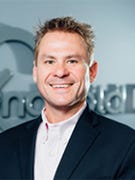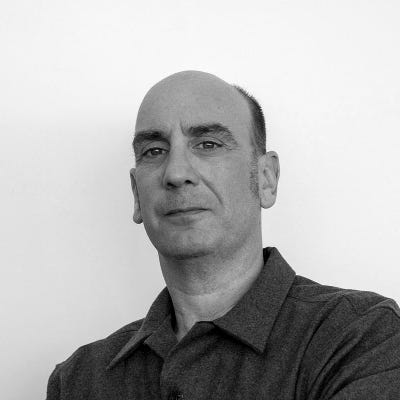How to Achieve Outstanding Customer SatisfactionHow to Achieve Outstanding Customer Satisfaction
Learn to deliver outstanding customer satisfaction better and more consistently than your competitors.
April 10, 2023

Outstanding customer satisfaction. Figure out how to deliver that better and more consistently than your competitors and you’ve solved one of the most difficult aspects of building and maintaining a successful business.
Companies that earned Channel Futures MSP 501 status, considered among the best in the IT channel, constantly work at cracking that code. They’ve established methods to ensure every one of their employees executes world-class customer service with each client in every transaction.
Jason Rincker, director of revenue at Stronghold Data; Tim Pabich, CEO of Magnitech; Anthony Polselli, CEO of Natural Networks; and Mitch Morgan, CEO of New Charter Technologies, are among those leaders. They’ll share their strategies on the “Achieving Customer Excellence: MSP 501 Best Practices“ panel at the Channel Partners Conference & Expo,
Join the more than 150 channel visionaries and experts speaking at the Channel Partners Conference & Expo. The event also features more than 375 ICT companies in the massive expo hall. Register now for the world’s largest independent channel event, May 1-4, at the Venetian in Las Vegas. |
These leaders change, adjust, tweak, monitor, document and review every aspect of the services they provide to guaranty all customers have the best experience possible. They fix what doesn’t work and polish what does. Over and over again. It’s not easy, but it’s necessary. Clients remember many of their good customer service interactions, but they never forget a single bad one.

Natural Networks’ Anthony Polselli
Anthony Polselli of Natural Networks in San Diego knows this. He keeps customers top-of-mind among his employees by sharing personal experiences. When his high-end car recently broke down on the off-ramp of a busy California freeway, he called the number for the manufacturer’s roadside assistance service. The company said it would provide immediate help. Not the case.
“It was a horrible experience. It was so bad and put such a bad taste in my mouth I may never buy another Audi again,” he said. “I take from those real-life experiences, even though they’re from a completely different industry. What can we learn from them to help us when we’re taking care of our clients?”
Here are some other ways our panelists achieve outstanding customer satisfaction and legendary service. Attend the session to learn even more.
Channel Futures: Share with us one or two best practices you use to achieve a high-level of customer satisfaction.
Jason Rincker: It’s important to emphasize the need for consistent and proactive communication with clients. This means setting expectations and delivering on them consistently, while also being transparent about any potential issues that may arise. In addition to the Blue Sky session, offering regular check-ins and progress reports can go a long way in building trust with clients. It’s also important to differentiate from competitors by offering personalized solutions that are tailored to each client’s unique needs and challenges. Blue Sky is what sets us apart.
Tim Pabich: We focus on employee satisfaction first. To do that, you have to develop your operational maturity and provide support within the organization. Happy employees translate into a happy customer experience. By doing this, we’ve created a demand for talent who want to be part of the Magnitech culture.
Anthony Polselli: We’re in a customer service business, so it’s about taking care of people. You need to understand people, you need to be there for them and listen. You need to be helpful. There aren’t one or two magic things that we do; we do a bunch of little things. We do the traditional stuff, like client satisfaction surveys after every ticket. It’s based on a zero- to five-star rating. If somebody gets less than a 4.5, then the manager is …
… supposed to call and talk to that person and understand what happened and ask how can we do better?
We also do technology business reviews. In those meetings, one of the last things we ask is, “What is a benefit of working with us?” And then we ask, “What is something we can do to improve?” I intentionally ask that question last because that’s more important to me. If I can understand what can we do to be better and get feedback from our clients, then I can take that to the team and work on improving. And then we review all of those TBRs with our employees. During our all-hands meeting, I will give that same feedback that the client gave me: Here’s what we can do to improve and here’s what we’re doing well. That way, each employee, each team member is hearing for themselves what the client is saying.
CF: What’s the most difficult aspect of achieving customer satisfaction. How do you overcome those challenges?

Stronghold Data’s Jason Rincker
JR: it’s important to recognize that maintaining high customer satisfaction is an ongoing effort, not a one-time accomplishment. It requires a willingness to adapt and evolve as client needs and expectations change. During times of digital transformation, it’s crucial to provide ample training and support to ensure a smooth transition. This includes both technical training as well as emotional support, as many clients may feel overwhelmed or resistant to change. To overcome these challenges, it’s important to establish a strong relationship with clients built on trust and open communication. This must happen at multiple levels within an organization.
TB: End-users generally will gravitate to technical resources they like and may not want the roulette game of calling and getting any random resource on the phone. Or maybe it’s the wrong resource working on the wrong things which can frustration the customer. Creating a process around who works on what, breaking up duties based on skill level, and having solid dispatching creates efficiencies and less errors.
AP: One of the most difficult things is when some clients only want to work with certain people. They only want to work with so-and-so. That’s fine, but he’s out for a week on vacation. Some companies will have a model where they say this is your tech for anything you need. Others have a model where it’s a big group of people. We try to balance that in the middle. [So] we tell the client, “These are the people who are going to care of you.” You can still build that personal relationship that’s so important. We want to have that trust with them, so when they have a problem, they’ll be a lot more honest with you about what the real issue is.
Another one is to make sure the client understands expectations. Every so often you’ll get a client that is really upset and gives you a low survey score because you didn’t respond quickly enough. That comes down to having proper communication and proper expectations on both sides. We have our SLAs of how quickly we respond to things, and sometimes that’s not good enough for them. We try to set the right expectations, but it doesn’t always work.
CF: What strategies or methods do you use to get all employees to deliver strong customer satisfaction?
JR: In addition to hiring the right people, it’s important to invest in ongoing training and development to ensure all employees are equipped with the skills and knowledge necessary to deliver high-quality service. This includes not only technical skills, but also soft skills such as effective communication and problem-solving. It’s also important to …
… provide regular feedback and recognition to encourage a culture of continuous improvement and excellence. Providing opportunities for employees to collaborate and share knowledge can also help build a sense of community and commitment to the organization’s mission and values. Soft skills seem to be the area that is hard to find these days.

Magnitech’s Tim Pabich
TP: Getting back to have organizational support for everyone. We have a director of talent and culture on staff who regularly checks in with the team. We stay on the pulse of how they are doing, what their experiences are, what their goals are, etc. Culture is key.
AP: Constant feedback, training, debriefs. There’s constant feedback, so as soon as we hear about something, we’ll pass that information along. If we hear one of our employees on the phone talking to a client or we see an email chain, we’ll tell them, here’s a different way you could have approached it or how they could have worded this differently. Sometimes techs will be too technical and use too much jargon. A lot of clients don’t care about that. They just want their stuff to work. I don’t mean to say we’re watching every single email or listening to every phone call. You just keep your ear open or spot-check emails through your ticketing system. And then you bring it up as training opportunities to discuss what went well or what could we do better.
CF: Have the ways you execute or achieve high levels of customer sat changed over the last few years?
JR: One trend that has emerged in recent years is the increasing use of automation and self-service options to streamline the customer experience. This can include chatbots, knowledge bases and online forums that allow clients to find solutions to common problems on their own. Another trend is the growing focus on customer feedback and data analysis to better understand client needs and preferences, and to identify areas for improvement in the service delivery process. This data can be used to inform ongoing training and development efforts, as well as to optimize workflows and processes to better serve clients.
TP: We are very selective in our hiring. We try to find the right fits rather than hire anyone and try to re-program them, which is difficult to do. Hiring isn’t a perfect science. We are very transparent about hiring and how everyone has to get through our process in order to be a solid contributor. We expect our colleagues to help us, but not make it harder. It’s good for morale even if that means we don’t hire as fast as everyone would like. Through communication we are able to all be on the same page.
AP: We’re always looking at how can we improve customer service and satisfaction because that’s probably the No. 1 thing I hear from leads of why they’re looking to change providers. They’re not happy with their current IT company because of customer service. We haven’t changed anything, but we do try to keep evolving in that area. We’ve added QBRs in the last three years. Being a member of peer groups to understand what other MSPs are doing that work or that doesn’t work.
Want to contact the author directly about this story? Have ideas for a follow-up article? Email Jeff O’Heir or connect with him on LinkedIn. |
About the Author
You May Also Like


